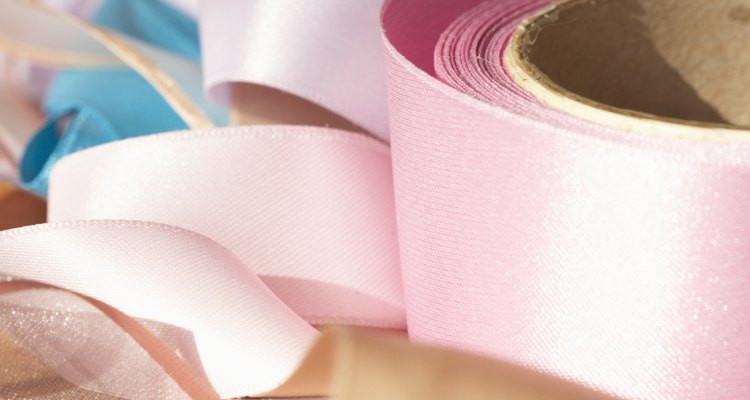
Maria Teijeiro/Photodisc/Getty Images
Redesigning dresses with decorative trim instantly transforms a basic garment into an embellished style. Ribbons -- generally sold by the yard in a variety of textures, colors and patterns -- are stitched directly onto the fabric. As an alternative, ribbons are made into decorative trim, such as rosettes or leaves, for embroidery and appliqué work onto specific areas of the dress. Whether applied by machine or by hand, extra care needs to be taken during the application process to prevent puckering in the design.
Ribbon Work
For those craft and sewing enthusiasts making their own decorative trim, ribbon work fits the mark. Narrow ribbons -- primarily made of silk -- are shaped into small flowers, leaves, stems and loops with specific needles -- chenille, tapestry or large tapestry. The higher the needle size, the smaller the eye of the needle. This fact is important when selecting the ribbon width, as well as prior to the application, to prevent puckering. For example, if you are using a needle with a narrow eye to add ribbon work to the yoke of a dress, forcing the wrong silk ribbon width through the fabric will automatically pucker the trim as well as the fabric. Work with comparable needles and ribbon widths to ensure that the ribbon passes easily, preventing puckering or fraying.
Dress
Yokes, waistbands and bottom hems are just a few places you can attach ribbons. Though opening side seams is daunting, this time-consuming task will reap the greatest reward during the application process. When positioning the ribbon, make sure it lies flat on the textile surface. For instance, grosgrain ribbon is a popular trim that has visible ridges adding texture to the dress. Increasing your machine's stitch length, as well as adding adhesive tape to the underside of the ribbon to stabilize it, will prevent puckering. Replace dull needles to ensure that they will easily pierce through the textured ribbon during application.
Linings
Certain high-end contemporary dress styles have attached linings made of satin or silk. Other styles, including children's dresses, have skirts with attached petticoats. Separate the dress shell layer from the lining prior to stitching any ribbons. Attempting to stitch the ribbon directly onto the two fabrics can cause the sewing machine foot to snag or catch onto the triple layered surface and cause extreme puckering and possible damage to the fabric shell of the dress. You should also avoid stretching the ribbon while feeding it into the machine.
Application
Stitching in the same direction on both sides of the fabric may seem like double the work during application. But the double-side stitched surface secures the ribbon in place and prevents puckering. Take the time to check the machine's tension and perform a stitch test on a piece of fabric scrap. The same applies for decorative stitches -- zigzag or overcast -- that catch the edges of the ribbon. If puckering persists, add a stabilizer -- a separate sheet that stabilizes fabric or trim in place -- to the underside of the ribbon. As an alternative, hand stitches, such as the slip-stitch, produce an almost invisible stitch reducing the probability of puckering.
Related Articles

How to Decorate Your Denim Jeans With ...

How to Hem a Sequin Dress

How to Stop Satin from Fraying

How to Fix a Low Neckline on a Wedding ...

How to Make an Alteration to a Lined ...
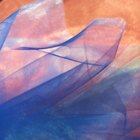
How to Make a Dress Poof

How to Hem a Sequin Dress
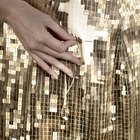
How to Prevent Rashes From Sequined ...

How to Make Chinese Dresses

How to Use a Sewing Machine to Make a ...

Sheath vs. Shift Dresses
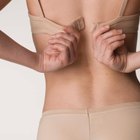
How to Fix a Wire That Has Come Out of ...

How to Make a Clerical Shirt

Dresses That Flatter an Hourglass Figure

How to Shorten the Shoulder Straps to a ...
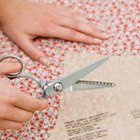
Do You Have to Use Pinking Shears to ...

Professional Dress for Plus-Size Women

How to Put Rank on an ACU Cap
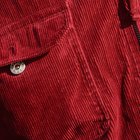
What Is the Difference Between Denim & ...
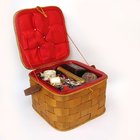
Rules for Sewing Elastic
References
Writer Bio
Mercedes Valladares is the founder of M721Organics and has been an independent designer for over 15 years. Her work experience commenced during college with manufacturers based in New York and Hong Kong. Her education includes LIM College, International Fine Arts College and design certification from the Paris Fashion Institute. She produces eco-crafting videos and writes recycling articles online.
Photo Credits
Maria Teijeiro/Photodisc/Getty Images